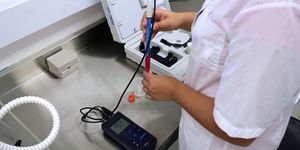Who Should Get the COVID Vaccine First?
Drug developers’ frantic hunt for vaccines against SARS-CoV-2 has finally begun to bear fruit, with several vaccines recently receiving nods from regulatory bodies worldwide. Several more are in various stages of development.
Given that for now, the supply of approved vaccines is extremely limited, the question faced by public health authorities is this — who should receive the first wave of vaccines? Researchers at the Johns Hopkins Bloomberg School of Public Health have created a tool to help make informed decisions around this: an online risk calculator for estimating COVID-related mortality.
The calculator, described in an article in Nature Medicine, is powered by an algorithm that draws from data generated by a plethora of COVID-19 studies into risk factors such as age, gender, sociodemographic factors, and the presence of underlying diseases.
"Our calculator represents a more quantitative approach and should complement other proposed qualitative guidelines, such as those by the National Academy of Sciences and Medicine, for determining individual and community risks and allocating vaccines," said study lead and biostatistics expert Nilanjan Chatterjee.
One of the most striking characteristics associated with COVID-19 is how the disease experience varies significantly between different groups — children often get off with very mild symptoms. In contrast, the elderly can face serious and life-threatening complications as a result of infection. Public health researchers have also noted demographic influences at play in the risk of mortality. For instance, Black and Latinx communities in the U.S. are more likely to die from COVID symptoms than white patients.
"Although we have long known about factors associated with greater mortality, there has been limited effort to incorporate these factors into prevention strategies and forecasting models," explained Chatterjee.
According to Chatterjee and colleagues, their risk calculator determined that only around four percent of the U.S. population is in the high-risk category (around five times greater than the average risk). This small proportion of individuals contribute to almost half of all COVID-related deaths. The risk was also found to vary greatly between geographical regions.
"For example, the percentage of the adult population exceeding the fivefold risk threshold varies from 0.4 percent in Layton, Utah, to 10.7 percent in Detroit, Michigan," said Chatterjee.
The calculator, which is updated weekly, could form an integral part of the decision-making process for resource allocation, particularly for supplies such as vaccines and N95 masks in short supply. For now, frontline medical workers and those with pre-existing medical conditions will likely be brought to the front of the line for a vaccination.
"People may understand broadly that with a preexisting condition such as obesity or diabetes, for example, they are at higher risk, but with our calculator, they should be able to understand their risk in a way that takes multiple factors into account," Chatterjee added.
Sources: Nature Medicine, EurekAlert!









